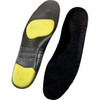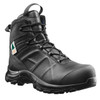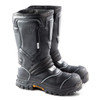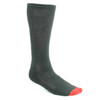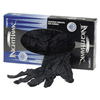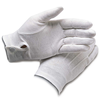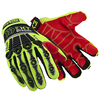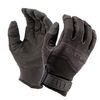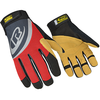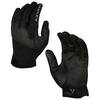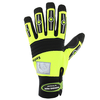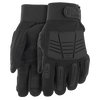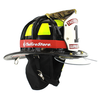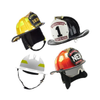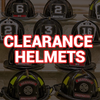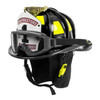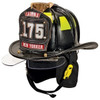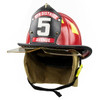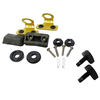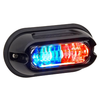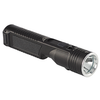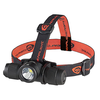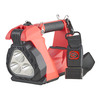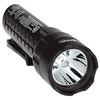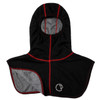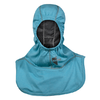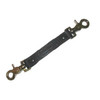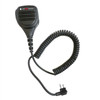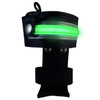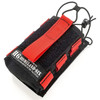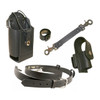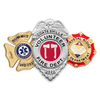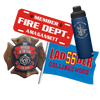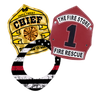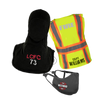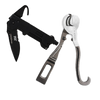Details
ATI’S JAFX4 is the industry’s only four layer hose.
It is made of high tenacity synthetic yarn circular woven and completely enveloped in a tough, highly resistant synthetic rubber. The hose is produced in a “co-extrusion” process, without the use of glues or adhesives, creating a homogenous hose which cannot deliminate.JAFX4 is available in yellow, in lengths of 50’ and 100’ and can be coupled with NST, NPSH, Storz or other, special order couplings. Shorter lengths are available by special order.
| DIAMETER | WEIGHT/100' | COIL DIAMETER | COUPLING BOWL SIZE |
| 1.5" | 30 lbs | 21" | 1.75" |
| 1.75" | 34 lbs | 22" | 2.0625" |
| 2" | 32 lbs | 22" | 2.28" |
| 2.5" | 52 lbs | 22" | 3" |
| 4" | 86 lbs | 23" | 4.28" |
| 5" | 112 lbs | 23" | 5.375" |
JAFX4 is a unique, highly durable nitrile rubber hose for use in supply and attack operations where resistance to petroleum, chemicals, and abrasion is critical. JAFX4 exceeds NFPA 1961 Fire Hose Standard, 2007 edition
Jacket Construction: Hose is manufactured using a four layer co-extrusion process to form a one-piece extruded hose with synthetic RLH cover. It is made from 100% high tenacity synthetic yarn, circular woven and locked in by tough, highly resistant synthetic nitrile rubber.
The process produces a single, homogenous extruded through-the-weave hose without the use of glues or adhesives of any kind. The co-extruded RLH cover material gives JAFX4 superior performance characteristics of abrasion, heat, chemical and age/ozone resistance over and above all other extruded hose products.
Lining Properties: The tensile strength of the lining and cover shall not be less than 2500 p.s.i. with an ultimate elongation of liner and cover not less than 500%.
Adhesion: The adhesion between the liner and the inside jacket is such that the rate of separation of a 1.5" wide strip cut transversely, shall not be greater than 1" per minute over a period of ten minutes, under a weight of 12 pounds.
Accelerated Aging: Lining specimens subjected to an exposure of 158º F ± 3.6º F, for a duration of 96 hours shall be conditioned as per ASTM D 573, Standard Test Method for Rubber – Deterioration in an Air Oven. Then, the specimens shall be tested to ASTM D4112, Standard Test Methods for Vulcanized Rubber and Thermoplastic Elastomers- Tension, Method A. Under evaluation, the tensile and elongation properties of the liner shall not be less than 75% of their initial values.
Couplings: Expansion-type in hardcoat anodized aluminum or Storz couplings are available. The anodize process creates a hard aluminum oxide coating which improves the abrasion, corrosion and electrolysis resistance of the completed fitting, while also preventing excessive wear on the male and female threads. All couplings meet NFPA 1963, Standard for Fire Hose Connections, 2009 edition.
Hydrostatic Tests:
| Diameter | Pressure | Proof Test | Burst Pressure |
| 1.5" | 330 psi | 600 psi | 900 psi |
| 1.75" | 330 psi | 600 psi | 900 psi |
| 2" | 330 psi | 600 psi | 900 psi |
| 2.5" | 330 psi | 600 psi | 900 psi |
| 4" | 250 psi | 500 psi | 750 psi |
| 5" | 250 psi | 500 psi | 750 psi |
Abrasion Resistance: Outer jacket must withstand a minimum of 30,000 cycles on the Taber Abraser with no abrasion through the filler yarn. H-22 Calibrade wheel to be used with 1,000 gram load on each wheel. The hose shall also withstand Underwriters Laboratory Abrasion Test in UL 19, Lined Fire Hose and Hose Assemblies and the Abrasion Test defined in FM Class Number 2111, Factory Mutual Approval Standard for Fire Hose
Friction Loss Chart:
| GPM | 1.5" | 2.75" | 2" | 2.5" | 4" | 5" |
| 100 | 20.5 | 9.6 | 4 | 1.2 | - | - |
| 150 | 47.9 | 21.3 | 8.7 | 2.9 | - | - |
| 200 | - | 40 | 16 | 5 | - | - |
| 250 | - | - | 24.8 | 8 | - | - |
| 500 | - | - | - | - | 2.5 | 0.9 |
| 800 | - | - | - | - | 6.5 | 2.3 |
| 1000 | - | - | - | - | 10.1 | 3.7 |
| 1250 | - | - | - | - | 14.5 | 5.7 |
| 1500 | - | - | - | - | 23 | 8.9 |
| 2000 | - | - | - | - | - | 15.5 |
| 2500 | - | - | - | - | - | 24.6 |
Cold Resistance: Hose shall have the capability of use down to -40º F. There shall be no apparent damage to jacket or lining when subjected to the following cold bend test: A 3-foot section of hose shall be exposed to a temperature of -40º F. for a period of 24 hours. At the end of the exposure period, the hose shall be rapidly bent 180 degrees back onto itself, first one way and then the other. Following this procedure, the hose shall not leak, nor show any damage to the jacket when subjected to the burst pressure shown above.
Heat Resistance: The ability of the hose to resist heat shall be verified using the test procedures defined in UL 19, Lined Fire Hose and Hose Assemblies, Heat-Resistance Test; FM Class Number 2111, Factory Mutual Appproval Standard for Fire Hose, Heat Resistance. That is, when subjected to a static pressure of 100 p.s.i., the hose shall be capable of withstanding a surface temperature of 1200º F for a minimum of two minutes without rupture or damage to the synthetic reinforcement.
Ozone Resistance: Hose liner shall show no signs of cracking under 7 power magnification when tested in accordance with ASTM D1149-86, Standard Test Methods for Rubber DeteriorationCracking in an Ozone Controlled Environment (samples prepared in accordance with ASTM D518-86, Standard Test Method for Rubber Deterioration-Surface Cracking, procedure C). Specimen shall be elongated at 15% for 120 hours of exposure at 100 pphm ozone at a temperature of 122º F.
Marking: Beginning at a point not less than 5’ ± 6” from each end, each length shall be stenciled in letters at least one inch high with the manufacturer’s identification, country of origin, month and year of manufacture, and the words, “Service Test to 400 p.s.i. per NFPA 1962.”
Weights and Coil Sizes:
| Hose Diameter / 50' | Weight | Coil Size |
| 1.5" | 16 lbs | 16" |
| 1.75" | 16 lbs | 16" |
| 2" | 17 lbs | 17" |
| 2.5" | 19 lbs | 19" |
| 4" | 85 lbs | 25" |
| 5" | 109 lbs | 27" |
Items shipped direct from manufacturer. Expected delivery in 10 days.


